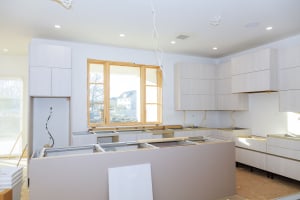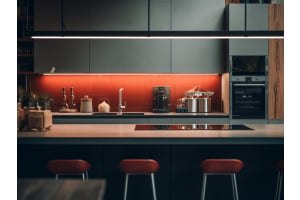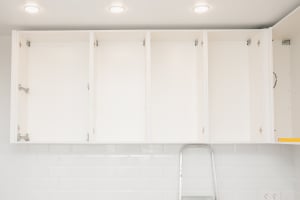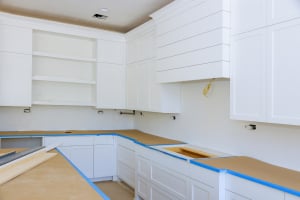If your wood wall panels are decades old and full of stains, dents, or scratches, painting them again can bring about a fresh and modernized look. In fact, it is one of the cheapest and easiest ways to transform the look of your home.
However, achieving a flawless finish requires careful attention to detail and the use of the right techniques. In this post, we'll share some expert tips that can help you paint your wood wall panels like a pro. If you get these right, the final look of your do-it-yourself wood wall panels will be nothing short of professional!
-
Choose the Right Paint
Choosing the right type of paint for your wood wall panels is perhaps the most crucial step of the entire process. If you make the wrong choice, the end result may be far away from your expectations. That’s because not all woods are compatible with all types of paint. For example, some woods may bleed tannins when they come in contact with certain paints, which can lead to discolored patches.
Generally, there are two types of paints used for wood wall panels. These are:
- Latex (acrylic): Latex-based paints are water-based and suitable for most wood wall paneling applications. They are easy to clean, produce low levels of fumes, and dry relatively quickly. These are ideal for interior wood paneling.
- Oil-based (alkyd): Oil-based paints provide a more durable and moisture-resistant finish, which makes them suitable for high-traffic areas and outdoor spaces. However, they have a stronger odor, longer drying times, and are high-maintenance.
In addition, we also recommend finalizing the finish when choosing a paint type. You can choose from the following finish types:
- Flat
- Satin
- Semi-gloss and gloss
Flat paints offer a matte finish and are excellent for hiding imperfections. However, they may not be as durable and are more challenging to clean.
Satin finishes have a subtle shine and last longer than flat paints. Semi-gloss and gloss finishes have a high sheen and they are most suitable for high-moisture areas like bathrooms and kitchens.
-
Choose the Right Primer
Similar to paint, there are several types of primer, and not all types are compatible with all wood types. Generally, there are three types of primers. These include:
- Oil-based primers: Suitable for outdoor use or heavily stained wood panels
- Latex (water-based) primers: Suitable for indoor use and easy to clean
- Shellac-based primers: Excellent stain-blockers and sealers
At this point, you should assess the primer’s chemical composition, too. We recommend looking for low-VOC or zero-VOC primers. These primers release fewer harmful chemicals into the air during and after application, so they are more environmentally friendly and safer for indoor use.
Bonus tip: If you had your wood panels installed recently, get in touch with the manufacturer or visit their website. This can give you a good idea regarding the type of primer that is fit for your wood panels.
-
Sand With a Fine-Grit Sandpaper (180-Grit or Higher)
Sanding with a fine-grit sandpaper brings about a smooth and even surface on your wood wall panels. It removes imperfections (such as roughness and minor blemishes), while also promoting better paint adhesion.
This step ensures that your primer and paint will adhere uniformly and result in a flawless finish. Experts also recommend lightly sanding the surface between coats of paint. It helps eliminate brush marks or bubbles and guarantees a truly smooth finish–just make sure you clean off any sanding dust before applying the next coat.
-
Apply Paint Using the BRB Technique
Tila Lee, an expert painter, recommends following the ‘BRB’ technique when painting wood wall panels. It stands for ‘brush, roll, brush.’
This means you start by painting the edges and corners with a brush. Then, roll on the paint in small sections. Finally, use a brush to feather out any roller marks and ensure even coverage. This method eliminates visible paint lines and ensures a smooth finish.
-
Use a High-Quality Brush and Roller
Lastly, it’s important to invest in high-quality brushes and rollers because premium tools ensure superior paint application. They also reduce the risk of streaks, drips, and uneven coverage.
If you’re buying from an online retailer, we recommend checking out the reviews of the paint brushes and rollers, as well as the seller’s reputation.
Wondering how to remove wood paneling from walls? Check out our latest post!













